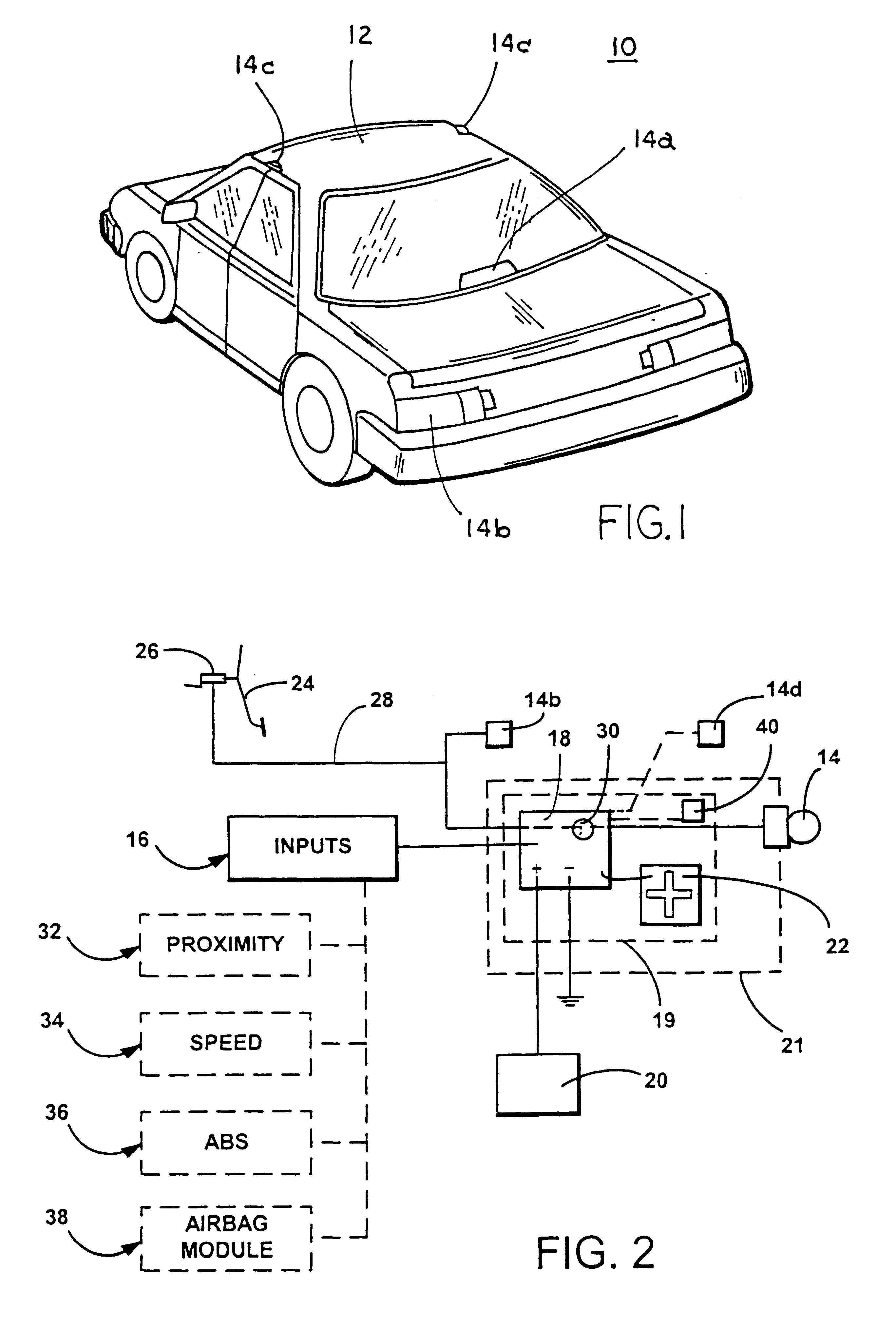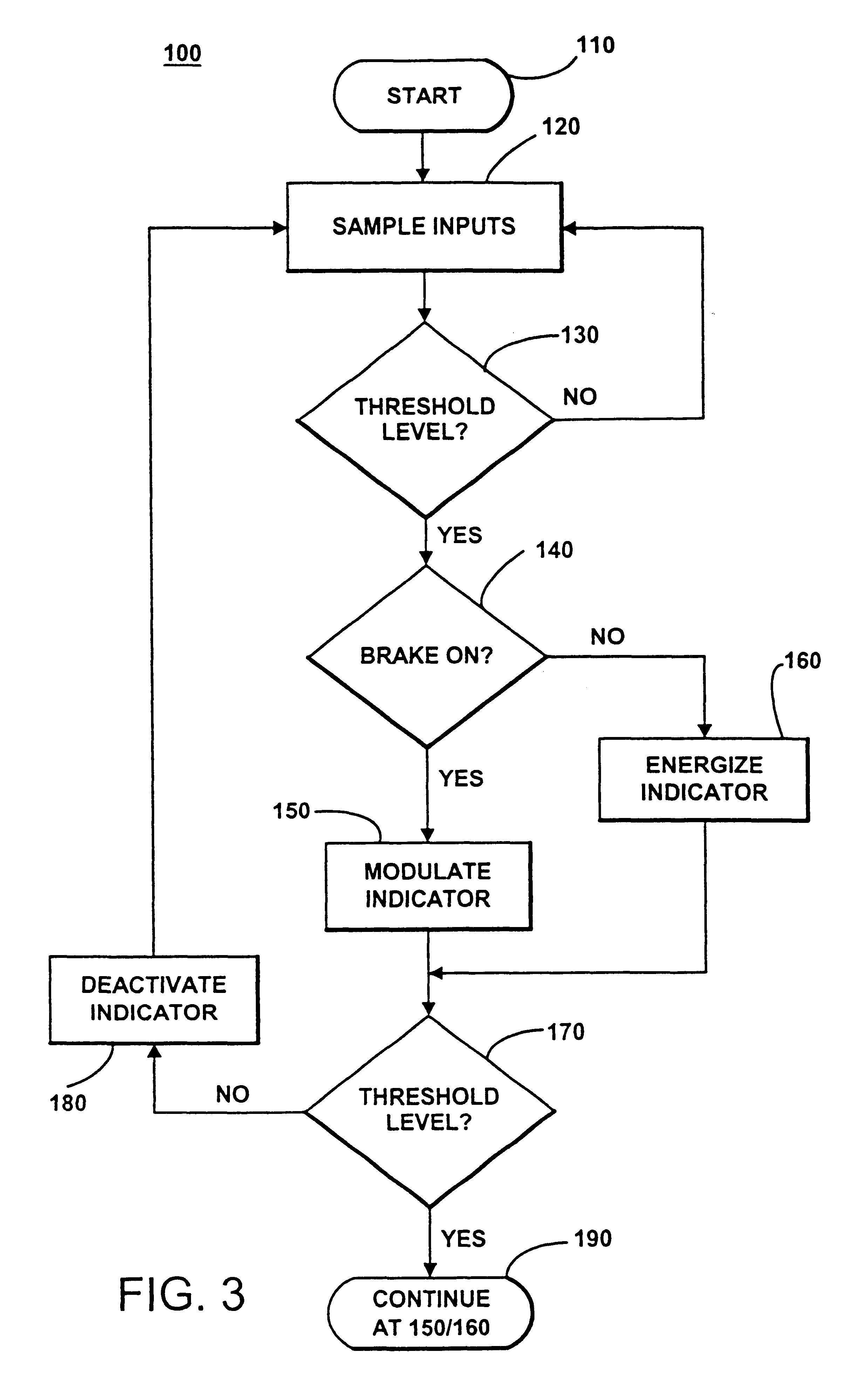Anti-collision safety system for vehicle
a safety system and vehicle technology, applied in the direction of vehicle components, signalling/lighting devices, optical signalling, etc., can solve the problems of slow response time of the system, proposed devices are not continuously operable, and conventional stop lamps do not relay information to following vehicles. , to achieve the effect of fast illumination build tim
- Summary
- Abstract
- Description
- Claims
- Application Information
AI Technical Summary
Benefits of technology
Problems solved by technology
Method used
Image
Examples
Embodiment Construction
Referring now specifically to the drawings and the illustrative embodiments depicted therein, a vehicular anti-collision safety light system 10 is positioned on a vehicle 12, which may be an automobile, a light truck, a van, a large truck or semi-trailer, a sport utility vehicle or the like (FIG. 1). Safety light system 10 is interconnected with an indicator 14 and actuates, adjusts or modulates an output of indicator 14 in response to one or more electronic inputs 16 (FIG. 2). Preferably, indicator 14 is a center high mounted stop lamp (CHMSL) 14a of vehicle 12, but may be another exteriorly directed light or lights on vehicle 12, such as taillights 14b, headlamps, turn signal indicators or the like or a separately installed signaling device. As shown in FIG. 2, safety light system 10 includes a microprocessor or control 18 which is preferably interconnected with an accelerometer 22. Accelerometer 22 is operable to detect and measure G forces acting on vehicle 12 and to provide a s...
PUM
 Login to View More
Login to View More Abstract
Description
Claims
Application Information
 Login to View More
Login to View More - R&D
- Intellectual Property
- Life Sciences
- Materials
- Tech Scout
- Unparalleled Data Quality
- Higher Quality Content
- 60% Fewer Hallucinations
Browse by: Latest US Patents, China's latest patents, Technical Efficacy Thesaurus, Application Domain, Technology Topic, Popular Technical Reports.
© 2025 PatSnap. All rights reserved.Legal|Privacy policy|Modern Slavery Act Transparency Statement|Sitemap|About US| Contact US: help@patsnap.com



